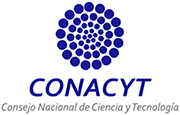The public-private confluence of interests between urban and real estate marketing. The case of the Mitikah Ciudad Viva project
DOI:
https://doi.org/10.20983/decumanus.2021.2.6Keywords:
urban conflict, real estate marketing, social media, urban tourismAbstract
The shift from a managerial to an entrepreneurial approach establishes a new form of urban governance based on a broader coalition of forces in which public-private partnerships have taken place. The Xoco-Mitikah urban conflict shows that the confluence of interests between the real estate and urban tourism industry embraces the common goal of designing an urban experience that makes the competitive advantages of Southern Mexico City profitable for both. Mitikah’s real estate marketing analysis showed that, through the promotion highlights of the South, the conflictive socio-territorial relationships that emerge along with the construction of real estate megaprojects are emotionally and affectively mediated.
Downloads
References
Anderson, B. (2009). Affective Atmospheres. Emot., Sp. Soc., 2(2), 77-81. https://doi.org/10.1016/j.emospa.2009.08.005
Autobuses Rápidos de Zacatlán (s/f). Turib. Of. Recuperado el 10 de enero de 2021, de https://www.turibus.com.mx/
Brenner, N. (2003). La formación de la ciudad global y el re-escalamiento del espacio del Estado en la Europa Occidental posfordista. eure (Santiago), 29(86), 05-35. https://doi.org/10.4067/S0250-71612003008600001
Brenner, N., Peck, J., & Theodore, N. (2010). After Neoliberalization? Globalizations, 7(3), 327-345. https://doi.org/10.1080/14747731003669669
Carrillo, L. (2019). Gestión de la marca Ciudad de México (cdmx) y su impacto económico. Quest. Pub., 2(24), 77-85. https://doi.org/10.5565/rev/qp.320
Coleman, S. (2004). Whose Conversation? Engaging the Public in Authentic Polylogue. Polit. Quart., 75(2), 112-120. https://doi.org/10.1111/j.1467-923X.2004.00594.x
Delgadillo, V. M. (2009). Patrimonio urbano y turismo cultural en la Ciudad de México: Las chinampas de Xochimilco y el Centro Histórico. Andamios, Rev. Inv. Soc., 6(12), 69-94. https://doi.org/10.29092/uacm.v6i12.135
Fernández, A. M. F. (2019). Quiénes son, qué opinan y qué valoran: Turismo en la cdmx. Kalpana, 17, 61-82. https://dialnet.unirioja.es/servlet/articulo?codigo=7313493
Friedmann, R. (2004). Marketing estratégico y participativo de ciudades. Rev. Imago Urb., 1. http://imagourbis.unq.edu.ar/uq_jaga/img/pdf/IMAGO%20URBIS%2001.pdf
Gobierno de la Ciudad de México (s/f). cdmx, la marca de la Ciudad de México. Recuperado el 9 de febrero de 2021, de http://data.fmpt.cdmx.gob.mx/marca/acerca-de-la-marca.html
Gómez, L. (2019, 18 de junio). Artistas e intelectuales piden a Sheinbaum rescatar centro de Coyoacán. La Jornada. https://www.jornada.com.mx/ultimas/capital/2019/06/18/artistas-e-intelectuales-piden-a-sheinbaum-rescatar-centro-de-coyoacan-4966.html
Harvey, D. (1989). From Managerialism to Entrepreneurialism: The Transformation in Urban Governance in Late Capitalism. Geogr. Annal. Ser. B, Hum. Geogr., 71(1), 3-17. https://doi.org/10.2307/490503
Koolhaas, R. (2006). La ciudad genérica. Editorial Gustavo Gili, S. L.
Köppen, E., & Sánchez, M. (2020). Visualidades de Xoco. Gentrificación, adaptación y resistencia simbólica en un barrio al sur de la Ciudad de México. En R. Cabrera (Ed.), Visiones trastocadas: relatos, significaciones y políticas de la mirada (pp. 149-162). gka
Ediciones.
Kotler, P., & Lane, K. (2016). Marketing Management. Prentice Hall.
López, R. (2019). La estética extendida como perspectiva para el diseño de experiencias. Academia xxii, 10(19), 31-50. http://dx.doi.org/10.22201/fa.2007252Xp.2019.19.69870
Mancera, M. Á. (s/f). Programa General de Desarrollo del Distrito Federal 2013-2018. Secretaría de Administración y Finanzas. Recuperado el 8 de febrero de 2021, de https://servidoresx3.finanzas.cdmx.gob.mx/documentos/ProgGralDesarrollo_2013_2018.pdf
Meléndez, N. (2018). Marca ciudad: cdmx, México, y Bogotá, Colombia: una comparación a través de dos. Universidad de Santo Tomás. http://repository.usta.edu.co/bitstream/handle/11634/10896/2018natalymelendez.pdf?sequence=1
Mítikah Ciudad Viva (s/f). [Perfil de Facebook]. Recuperado el 16 de febrero de 2021, de https://www.facebook.com/MitikahResidencial
Nusselder, A. (2013). Twitter and the Personalization of Politics. Psychoan., Cult. Soc., 18(1), 91-100. https://doi.org/10.1057/pcs.2012.45
PCP Architects (s/f). Pelli Clarke Pelli Architects. Retrieved February 13th, 2021, from https://pcparch.com/
PR Newswire (s/f). cdmx Branding Elevates Tourism for Mexico City. Retrieved February 9th, 2021, from https://www.prnewswire.com/news-releases/cdmx-branding-elevates-tourism-for-mexico-city-300753265.html
Procuraduría Ambiental y del Ordenamiento Territorial de la cdmx (s/f). Programa Delegacional de Desarrollo Urbano de Coyoacán 1997. Recuperado el 5 de febrero de 2021, de http://www.paot.org.mx/centro/programas/delegacion/coyoacan.pdf
Redacción Eje Central (s/f). cdmx, la marca 19 del mundo. Eje Central. Recuperado el 9 de febrero de 2021, de https://www.ejecentral.com.mx/cdmx-la-marca-19-del-mundo/
Saffron Consultants (s/f). Saffron City Brand Barometer 2019. Retrieved February 9th, 2021, from https://cbb20.saffron-consultants.com/
Secretaría de Turismo (s/f-a). Agendas de competitividad de los destinos turísticos de México. Recuperado el 7 de febrero de 2021, de http://www.sectur.gob.mx/wp-content/uploads/2015/02/PDF-Ciudad-de-Mexico.pdf
----- (s/f-b). Destinos Coyoacán. Recuperado el 10 de enero de 2021, de http://cdmxtravel.com/es/destinos/coyoacan.html
Williams, B. A., & Carpini, M. X. D. (2011). After Broadcast News: Media Regimes, Democracy, and the New Information Environment. Cambridge University Press.
Downloads
Published
How to Cite
Issue
Section
License
Copyright (c) 2021 DECUMANUS. REVISTA INTERDISCIPLINARIA SOBRE ESTUDIOS URBANOS

This work is licensed under a Creative Commons Attribution-NonCommercial-ShareAlike 4.0 International License.











